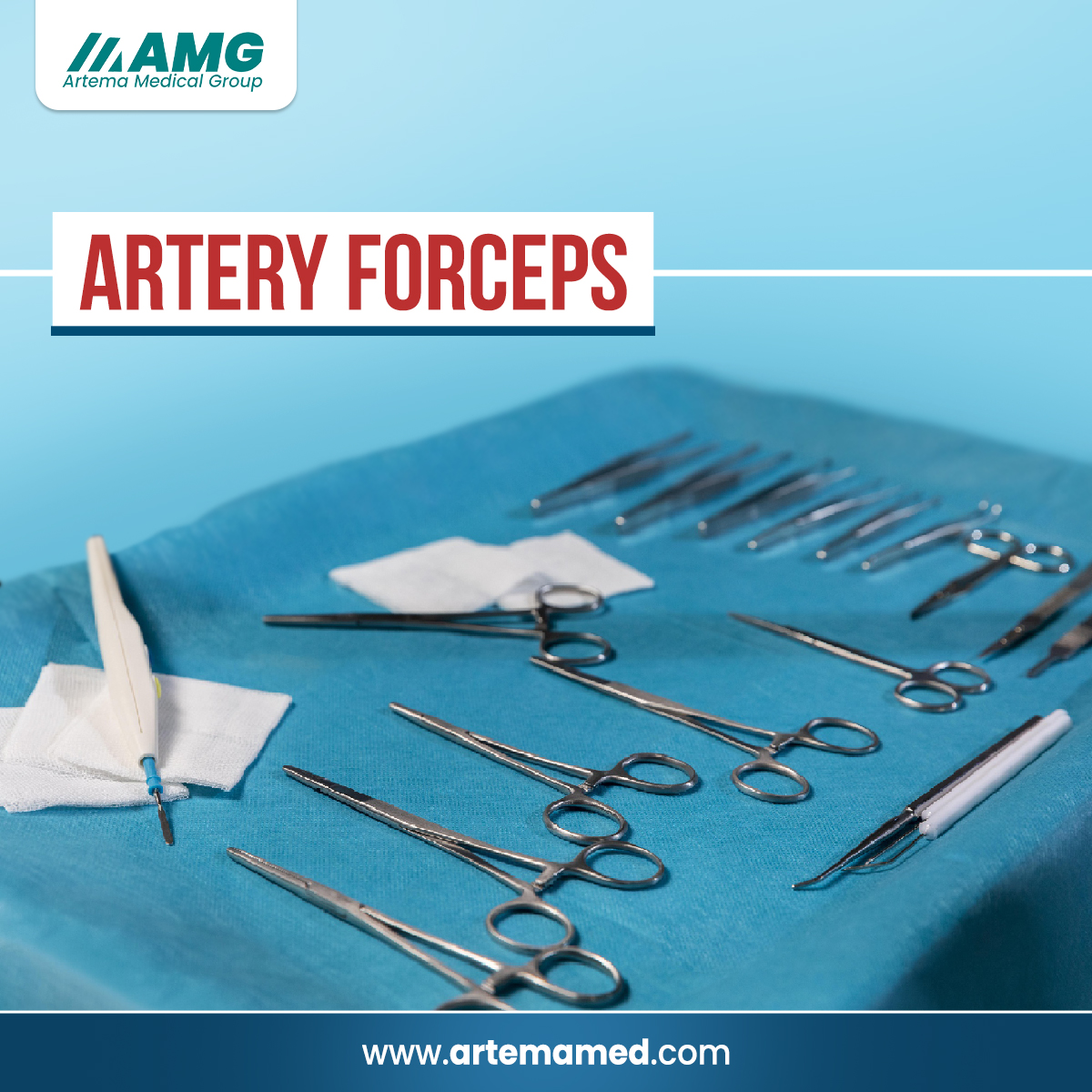Artery forceps are a crucial tool in surgical and medical procedures. They help control bleeding and manage delicate tissues during operations. Without them, many surgeries would be far more complicated and dangerous. Their ability to clamp blood vessels and provide a firm grip makes them indispensable for medical professionals. Understanding their importance, different uses, and structure helps in appreciating their role in modern medicine.
Why Artery Forceps Are Essential in Surgery
Artery forceps play a vital role in maintaining a blood-free surgical field. By clamping arteries and veins, they prevent excessive bleeding and allow surgeons to focus on the procedure without constant blood loss. Their ability to lock in place ensures that the surgeon does not need to maintain continuous pressure, freeing their hands for other critical tasks.
These forceps also help in holding tissues during surgery. Delicate tissues require a steady grip to prevent tearing or unnecessary damage. With artery forceps, surgeons can handle tissues with precision, ensuring successful surgical outcomes. Whether it is a minor or major surgery, these instruments make operations safer and more efficient.
Another reason artery forceps are essential is their role in emergency medical situations. When a patient suffers from an injury that causes severe bleeding, artery forceps can be used to temporarily stop the blood flow until further treatment is available. This makes them a life-saving tool in trauma care, emergency rooms, and even battlefield medicine.
Different Artery Forceps Uses in Medicine
The primary use of artery forceps is to control bleeding. In any surgical procedure, excessive bleeding can make it difficult for the surgeon to operate effectively. By clamping the blood vessels, artery forceps ensure a clear view of the surgical site and allow for precise incisions.
Another important use is in wound management. When closing deep wounds, artery forceps hold the tissue in place while the doctor applies sutures. This stability is necessary for proper healing and reduces the chances of infection. In dental procedures, these forceps are used to control bleeding in the gums and hold tissues steady during extractions or other treatments.
Veterinarians also rely on artery forceps when treating animals. Whether performing surgery on small pets or larger animals, these instruments help in controlling bleeding and managing tissues. The adaptability of artery forceps makes them useful across different medical disciplines.
Apart from surgical settings, artery forceps are sometimes used in medical research and laboratory experiments. Scientists use them to handle delicate tissues and organs, ensuring accurate results in biological studies. This versatility highlights the significance of artery forceps beyond just surgery.
Anatomy of Artery Forceps: Understanding Their Parts
Artery forceps are designed with specific parts that contribute to their function. The handle is shaped to provide a secure grip, allowing medical professionals to use them with precision. Most handles have loops similar to scissors, making them easy to hold and control.
The ratchet mechanism is another essential part. This feature allows the forceps to lock in place, ensuring a firm hold on the blood vessel or tissue. Once locked, the surgeon does not have to apply constant pressure, reducing hand fatigue during long procedures. The locking mechanism also prevents accidental slipping, which could cause complications.
The jaws of artery forceps are the working end of the instrument. They can be straight or curved, depending on the surgical need. Some forceps have serrated jaws, which provide a better grip and prevent slipping when clamping blood vessels. The type of jaws chosen depends on the specific procedure being performed.
The overall length of the forceps varies, with longer forceps used for deep surgical sites and shorter ones for surface-level procedures. Choosing the right length ensures that the surgeon can reach the necessary area without difficulty.
Types of Artery Forceps and Their Specialized Roles
Different types of artery forceps are designed to suit specific medical needs. Halsted mosquito forceps are small and delicate, making them ideal for clamping small blood vessels. These are often used in minor surgeries, dental procedures, and wound care.
Kelly forceps are slightly larger and are commonly used in general surgery. They are effective for controlling bleeding in medium-sized blood vessels. Their sturdy design makes them a preferred choice for a wide range of procedures.
Rochester forceps are designed for handling larger blood vessels and tissues. These forceps provide a strong grip, making them essential in major surgeries. Their robust structure allows surgeons to work efficiently without the risk of slipping.
Each type of artery forceps is tailored to a specific function, making it important for medical professionals to choose the right one for each procedure. The correct selection enhances efficiency and ensures patient safety.
Proper Usage and Maintenance of Artery Forceps
Using artery forceps correctly is crucial for achieving the best surgical results. Surgeons and medical professionals undergo training to ensure proper handling. The forceps should be applied gently to avoid damaging blood vessels. The locking mechanism must be engaged securely to hold the vessel without applying excessive pressure.
When releasing artery forceps, care must be taken to avoid sudden blood flow, which could lead to complications. Controlled release ensures a smooth transition during surgery and prevents unnecessary bleeding.
Sterilization is an important part of maintaining artery forceps. Since they come into direct contact with blood and tissues, they must be thoroughly cleaned and disinfected after each use. Proper sterilization prevents infections and ensures that the instruments remain in good condition for future use.
Regular inspection of artery forceps is also necessary to check for signs of wear or damage. Any defects in the instrument could compromise surgical safety. Ensuring that all medical instruments, including artery forceps, are in optimal condition contributes to better patient outcomes.
The Continued Importance of Artery Forceps in Modern Medicine
Despite advances in medical technology, artery forceps remain an essential tool in surgical procedures. New materials and improved designs have enhanced their durability and effectiveness. However, their fundamental role in surgery remains unchanged.
Medical professionals rely on artery forceps to perform life-saving procedures with precision and control. Their ability to manage bleeding and handle delicate tissues makes them a necessary tool in hospitals, clinics, and emergency settings.
Artery forceps are also used in medical training, helping students and future surgeons develop essential surgical skills. Their importance in education highlights their lasting value in the medical field.
The use of artery forceps extends beyond human medicine. Veterinarians and researchers also depend on them for various procedures. Their versatility ensures that they remain relevant across different medical and scientific disciplines.
Conclusion
Artery forceps are a vital instrument in medical procedures, playing a key role in controlling bleeding and managing tissues. Their use spans from major surgeries to minor medical treatments, proving their versatility and importance. Understanding the different artery forceps uses and their structure helps medical professionals make informed choices during procedures.
The different artery forceps parts contribute to their function, ensuring precision and safety in surgeries. Proper usage and maintenance are essential for ensuring their longevity and effectiveness. As medical science continues to evolve, artery forceps will remain a fundamental tool in ensuring safe and efficient surgical practices. Their role in medicine is undeniable, making them an indispensable part of any surgical toolkit.
More info: Artema Medical



